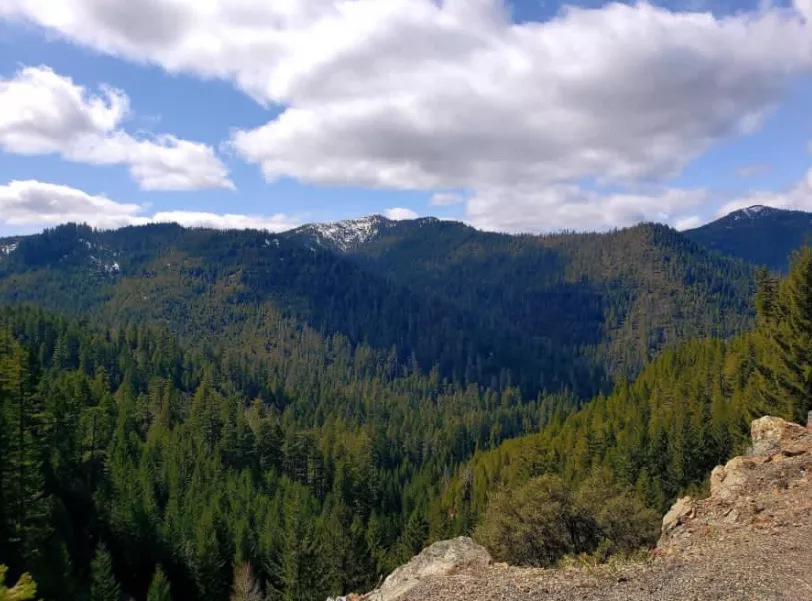
Photo Credit: Carol Valentine
Mature and old-growth forests provide wildlife habitat and biodiversity, are sources of clean water and air, and mitigate the effects of climate change by pulling massive amounts of carbon dioxide from the atmosphere and storing it both above and below ground. More than 10% of our nation’s carbon emissions each year are captured by our public and private forestlands.
But since the 17th century, more than 85% of North America's old-growth forests have been lost to logging! Less than 10% of Oregon’s old-growth forests remain, mostly on public Forest Service and Bureau of Land Management (BLM) lands.
On Earth Day 2022, President Biden issued an executive order recognizing the importance of protecting old-growth and mature forests to addressing climate change, and instructing federal agencies to inventory these forests. With the mature and old-growth forest inventory complete, the U.S. Forest Service (FS) has opened a comment period until July 20 at 6 PM PDT to gather the public's input on upcoming rulemaking. This is your chance to influence the FS and change its priority from timber production to conservation and other public benefits. Check out this video for a 1-minute overview.
Please SEND A COMMENT today! Let the Forest Service know that you want mature and old growth forests on public lands to be protected from logging—the biggest threat to their ability to serve as a solution for the crises of climate change and biodiversity loss. Individual comments are more impactful, so please add some comments in your own words in the blank text box.
To inform their rulemaking, the Forest Service has posed specific questions to help identify the best ways to sustainably protect, conserve, and manage the nation's forests and grasslands amid the increasing impact of climate change. For example:
- Given our current understanding of the threats to the amount and distribution of mature and old-growth forest conditions, what policy, management, or practices would enhance ecosystem resilience and distribution of these conditions under a changing climate?
- How might the Forest Service use the mature and old-growth forest inventory (directed by E.O. 14072) together with analyzing threats and risks to determine and prioritize when, where, and how different types of management will best enable retention and expansion of mature and old-growth forests over time?
Giving specific answers is great, but you don’t have to be an expert! The most important thing is to not sit this comment period out. TAKE ACTION HERE before 6 pm PDT on July 20 and let the Forest Service know that we need clear and meaningful rules to ensure mature and old-growth forests and trees are protected from logging and other destructive practices, so they can continue to help mitigate the climate and biodiversity crises.
For even more impact, you can submit your personal comments at the rulemaking link: https://www.regulations.gov/document/FS-2023-0006-0002
To learn more about how the Oregon Chapter’s Forest Team is working to protect forests in Oregon and beyond, or to get involved, contact Carol at IllinoisValley@Oregon.SierraClub.org.